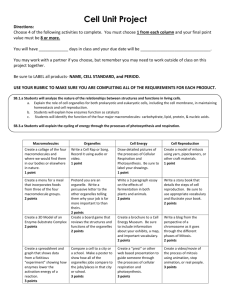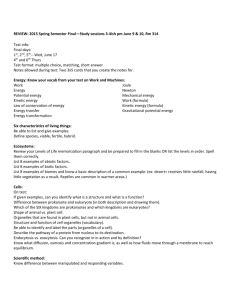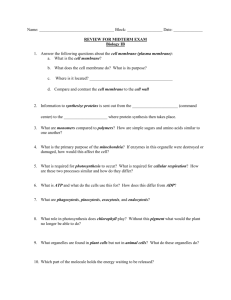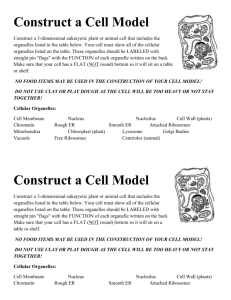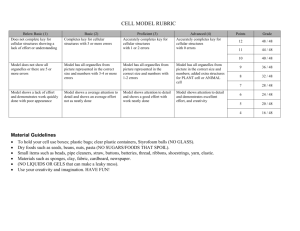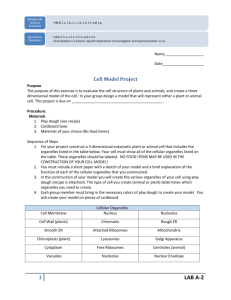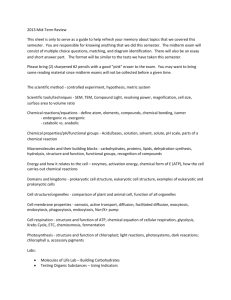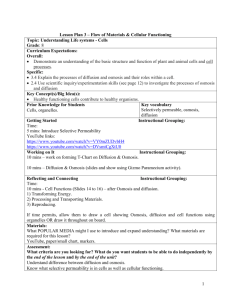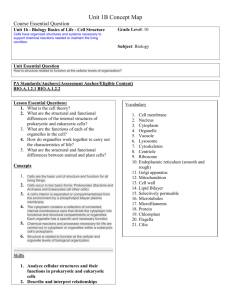(periods 1-3) Cell Test Review hc 2014
advertisement
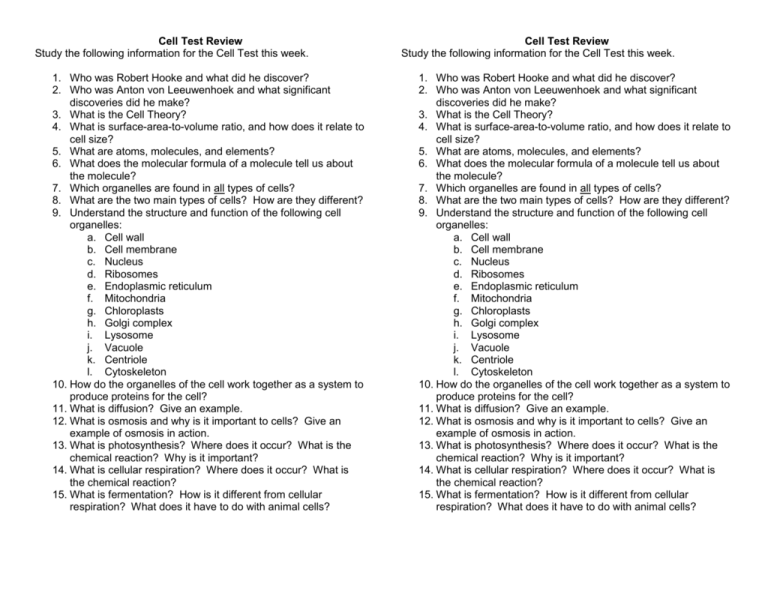
Cell Test Review Study the following information for the Cell Test this week. 1. Who was Robert Hooke and what did he discover? 2. Who was Anton von Leeuwenhoek and what significant discoveries did he make? 3. What is the Cell Theory? 4. What is surface-area-to-volume ratio, and how does it relate to cell size? 5. What are atoms, molecules, and elements? 6. What does the molecular formula of a molecule tell us about the molecule? 7. Which organelles are found in all types of cells? 8. What are the two main types of cells? How are they different? 9. Understand the structure and function of the following cell organelles: a. Cell wall b. Cell membrane c. Nucleus d. Ribosomes e. Endoplasmic reticulum f. Mitochondria g. Chloroplasts h. Golgi complex i. Lysosome j. Vacuole k. Centriole l. Cytoskeleton 10. How do the organelles of the cell work together as a system to produce proteins for the cell? 11. What is diffusion? Give an example. 12. What is osmosis and why is it important to cells? Give an example of osmosis in action. 13. What is photosynthesis? Where does it occur? What is the chemical reaction? Why is it important? 14. What is cellular respiration? Where does it occur? What is the chemical reaction? 15. What is fermentation? How is it different from cellular respiration? What does it have to do with animal cells? Cell Test Review Study the following information for the Cell Test this week. 1. Who was Robert Hooke and what did he discover? 2. Who was Anton von Leeuwenhoek and what significant discoveries did he make? 3. What is the Cell Theory? 4. What is surface-area-to-volume ratio, and how does it relate to cell size? 5. What are atoms, molecules, and elements? 6. What does the molecular formula of a molecule tell us about the molecule? 7. Which organelles are found in all types of cells? 8. What are the two main types of cells? How are they different? 9. Understand the structure and function of the following cell organelles: a. Cell wall b. Cell membrane c. Nucleus d. Ribosomes e. Endoplasmic reticulum f. Mitochondria g. Chloroplasts h. Golgi complex i. Lysosome j. Vacuole k. Centriole l. Cytoskeleton 10. How do the organelles of the cell work together as a system to produce proteins for the cell? 11. What is diffusion? Give an example. 12. What is osmosis and why is it important to cells? Give an example of osmosis in action. 13. What is photosynthesis? Where does it occur? What is the chemical reaction? Why is it important? 14. What is cellular respiration? Where does it occur? What is the chemical reaction? 15. What is fermentation? How is it different from cellular respiration? What does it have to do with animal cells?
